We would expect that most members of the SoleSavy community can instantly identify the names of the iconic designs in footwear—Air Max 1, Air Jordan IV. Some may even know the year they released—Air Max 1 in 1987, Air Jordan IV in 1989. Yet, aside from Tinker Hatfield (who designed both the Air Max 1 and Jordan 4), many of the artists who put pencil to pad and conceptualized the designs we chase after 30-40 years later remain relatively obscure. Our Designer Spotlight series looks to bring some of those names to the forefront.
Our first featured designer is Wilson Smith III, the man behind notable models like the Air Max Uptempo, Air Max CB34, and the first dedicated designer for Brand Jordan with the AJ16 and AJ17. Smith’s models are still retro’d and have become part of sneaker culture’s vocabulary. Footwear design exploded during the time when Smith rose up the ranks in Beaverton, and his impact is still felt today, as he was named one of America’s Top Black Designers by Black Enterprise Magazine.
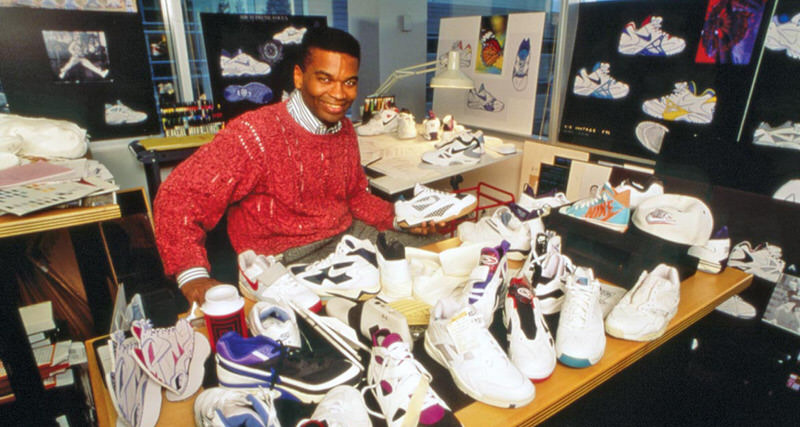 Image via Nike
Image via Nike
Smith started his tenure at Nike in 1983, three years after graduating from the University of Oregon’s renowned architecture program. He was first hired as a Corporate Interior Designer, crafting showrooms, retail spaces, and offices—as well as a few print publications. Interestingly, the quality work he did on interiors led to a job in footwear. Smith put his nose to the grindstone for years before working on the product that makes Nike famous. The footwear space in 1983 was minuscule compared to the colossal importance that sneakers hold today, and Smith got his shot after three years during a critical time in Nike’s trajectory: 1986.
One year earlier, the Air Jordan 1 and Dunk arrived on the scene, shifting the landscape in basketball footwear. At the time, Converse and adidas had all the significant endorsements and team contracts, but that began to change with the Air Jordan and Dunk.
Smith’s role as a designer began in 1986, and within four years, he worked his way up to the title of Senior Tennis Designer in 1990. While the tennis program had not yet shot to national recognition like it would about a decade later, it’s essential to chart Nike’s growth in the pop culture ethos, which was rooted in basketball.
Between 1986 and 1990, the Air Jordans 2, 3, and 4 showed that new heights of design and innovation were possible through sneakers. Along with those iconic silhouettes, Nike also had several other hardwood classics such as the Air Assault High, Air Revolution, Air Flight Lows, Highs, and Air Alpha Force. Essential to the growth of the Swoosh’s ubiquity was the presence of these sneakers on the streets, not just their use as functional athletic shoes on the court.
Aside from basketball, the Air Trainer 1 and Air Max 1 continued to push the envelope, as did the Weiden + Kennedy-aided campaigns that coined the “Just Do It” adage and the “Bo Knows” campaign. The swell of Nike’s importance in the world had brought the brand to prominence in what many call the “golden era” of design in 1990, right when Smith got his promotion.
In Sole Provider, one of the essential books on sneakers, author Robert “Scoop” Jackson wrote about Nike’s dominance in that era: “1990-98 are what have become known as the Golden Years. The years where they could do no wrong.” By 1993, a Sports Illustrated article noted, “Of the 320 or so NBA players, 265 wear Nike shoes.” So Nike had taken hold of the league on the floor, and the crowds of people clamoring to wear the brand’s shoes off the court. Smith commented on this era: “I think generally the mid-90s were just a bigger-than-life time.” Smith’s designs would incorporate that maximalist language on the sneakers, a sentiment best seen on the 1996 Air More Uptempo, the silhouette that may be his most revered.
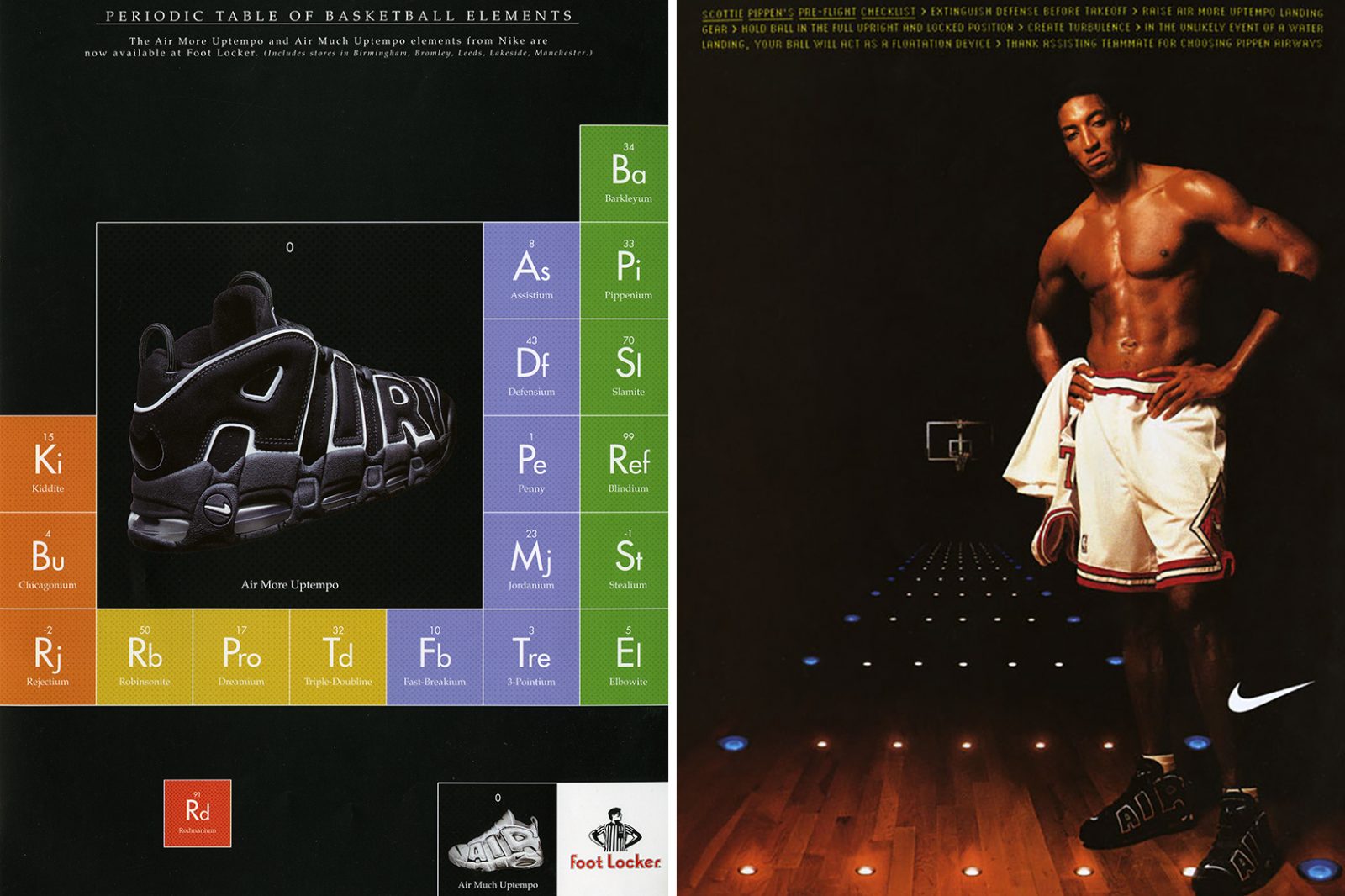 Image via Footlocker / Nike
Image via Footlocker / Nike
If you don’t know the shoe by name, you have seen the design—with huge “AIR” branding that wraps around the heel and takes up almost all medial and lateral panels. The design spoke to the brash nature of the era—big cars, big pants, and big jerseys with oversized fitted caps. The anti-nuance of the shoe made it a hit, as Scottie Pippen donned it while beating Seattle in the 1996 Finals and later in the Olympics. Smith was inspired by top-to-bottom graffiti pieces that covered subway cars and oversized objects in pop art. In turn, the shoe turns the silhouette itself into a pop-art statement about commercialism, swagger, and ambition. In Smith’s office, a black leather couch with “AIR” letters sits as a reminder of the iconic design.
Another standout model that Smith crafted for Nike Basketball was the Air Max Uptempo, whose advertisements proclaimed it as: “The most Nike Air cushioning that we’ve ever put into one sole.” With a full-length Air unit and visible Air on the outsole, the sneaker made its way onto the feet of ballers like Scottie Pippen and Kevin Garnett in the pros and college stars like Tim Duncan and Ray Allen.
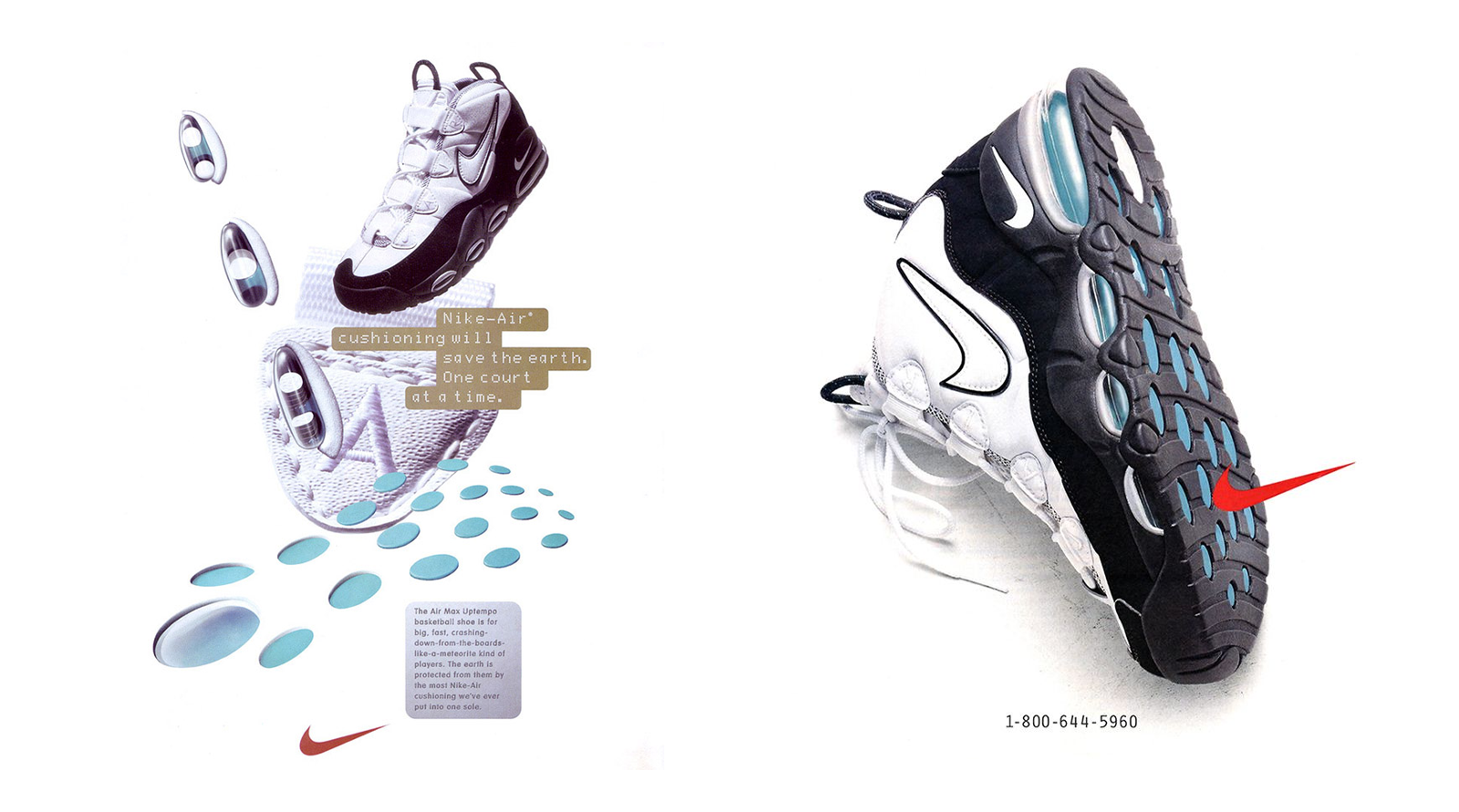 Image via Nike
Image via Nike
Another pro whose feet donned Smith’s designs was none other than the Round Mound of Rebound, Charles Barkley. The power forward was on the Phoenix Suns, and his shoes had an iconic 90s look with Air Max midsoles and uppers in black, white, and purple. In 1996, Smith crafted the Air Max CB34 with black on black suede and tumbled leather with a midfoot strap. The outsoles had graffiti-inspired “Sir” and “Charles” text scrawled across the bottom with a crown as the dot on the lower-case “i.”
With a successful run at Nike Basketball, Wilson Smith headed over to Jordan Brand to assume design responsibilities for Jordan’s 16th and 17th signature models. In 2001, he became Jordan Brand’s first dedicated designer and one of only a handful of people to get the reins on an Air Jordan model. Smith employed an almost full-length Air Unit that sits below an upper with a few callbacks to well-known Js: the patent toe cap from the 11, the stitching pattern found on the 12, and the woven design located on the 15. A shroud covering the tongue and laces signifies MJ’s transition from player to executive, which turned out to be short-lived.
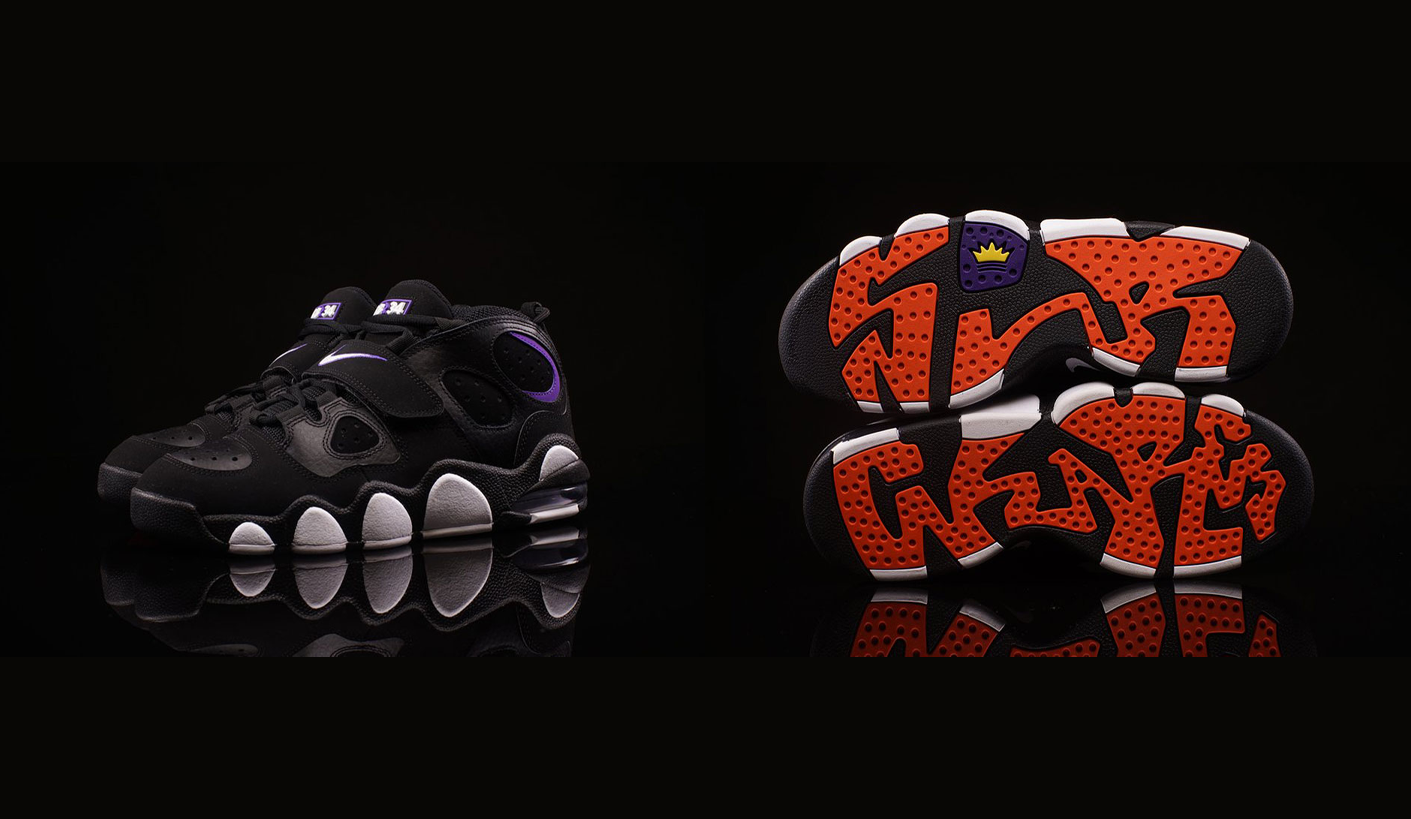 Image via Nike
Image via Nike
When Jordan returned to the court in 2002 as a member of the Washington Wizards, he was wearing the Air Jordan 17, which Smith also designed. This model has a slew of design references, including jazz music, Aston Martins, and golf bunkers. Many will remember that the shoe also came in a metal briefcase to set the sneaker in a different context altogether as a luxury item. In 2021, that idea may seem unremarkable, but at the time, that detail and the sneaker’s construction made it the market’s most expensive sneaker at $200 a pair.
While Smith may be best remembered for his contributions to the Nike Basketball line, he was able to craft many shoes for Nike Tennis athletes as well. Before his vaunted position as a designer of basketball shoes that still get retro releases, Smith was known as “Mr. Tennis.” He was tasked with designing products for Andre Agassi, whose models stood out just as the rebellious tennis star did. Agassi’s tennis model, the Air Flair, was Smith’s favorite. Designed by Smith in 1994, the Air Flair was on Agassi’s feet as he won the US Open that year. The model saw a few retro releases, but it has not had the same staying power as the Air More Uptempo.
Smith retains the title of Senior Designer and DNA (Department of Nike Archives) Design Specialist at Beaverton, where he has worked for 38 years. In that role, he functions as a curator of sorts, sifting through the past to highlight standout models. With all that time in the game, Smith prides himself on passing down his knowledge to fledglings. Smith cut his teeth designing retail spaces before he ever crafted a shoe. Over time, he became a standout designer who crafted an iconic design language for the largest footwear company on the planet.
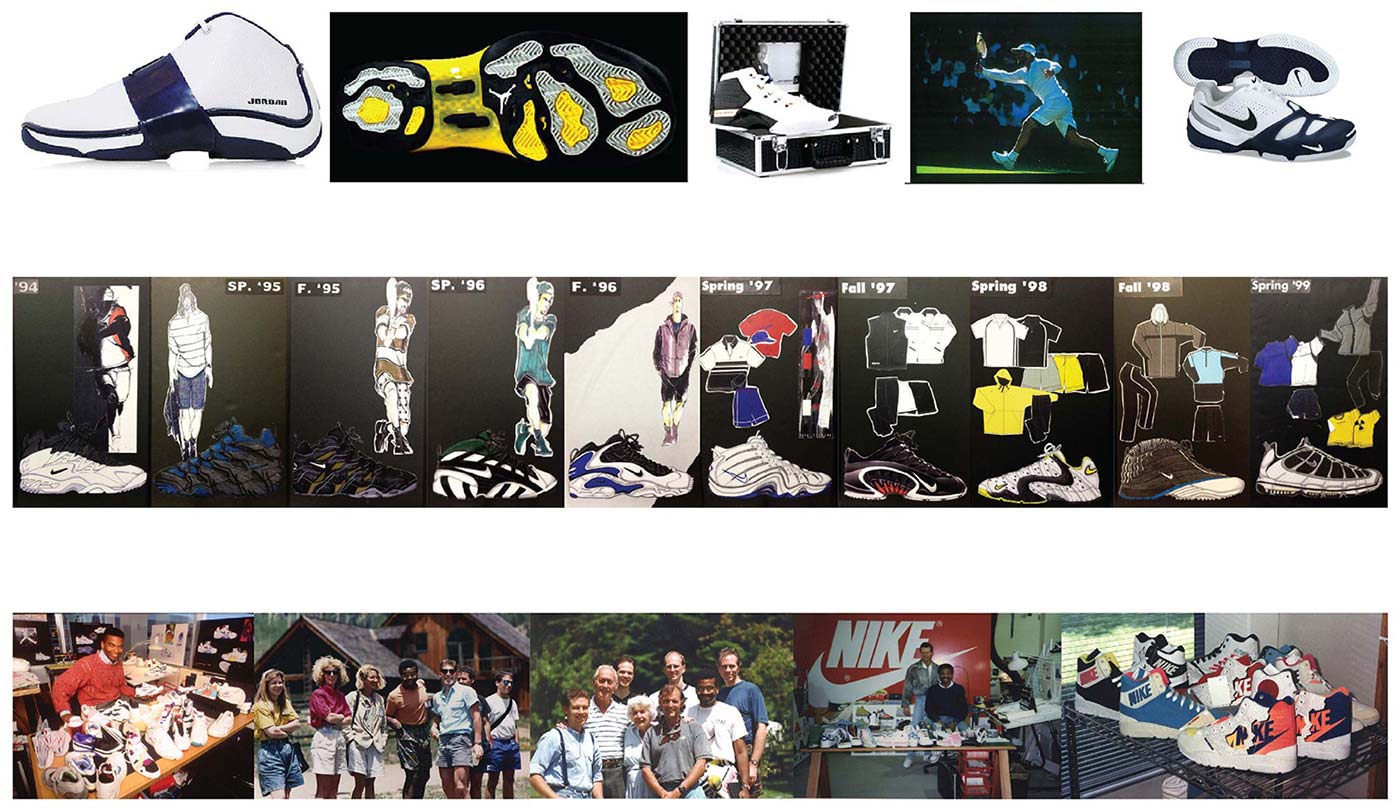
Wilson Smith III Design Reel + Archival Photos via Nike

